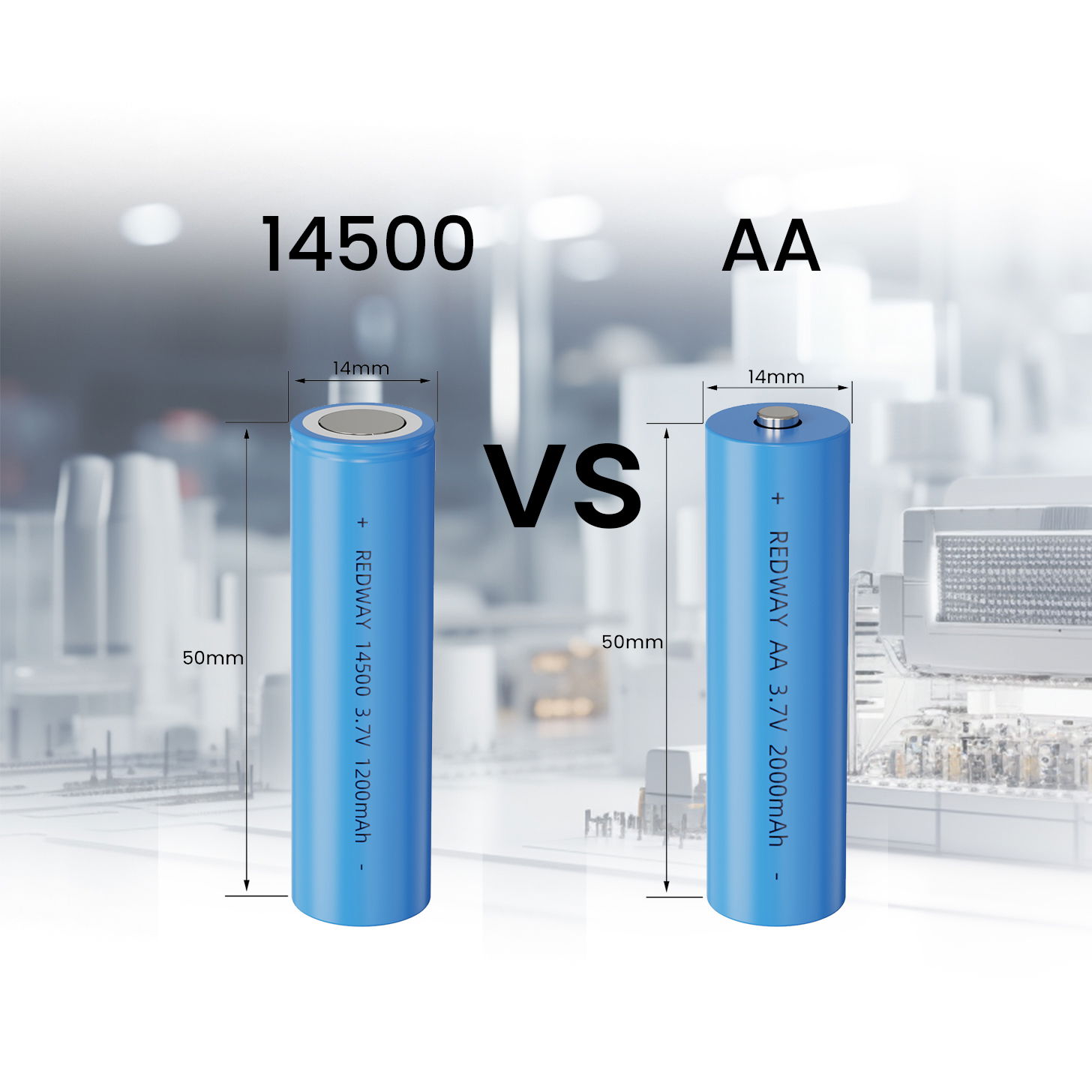Which Is More Powerful 14500 or AA Battery
In a world where gadgets reign supreme and power is paramount, the debate over battery types continues to spark interest. Among the contenders in this charged conversation are the 14500 and the AA battery. Both have their loyal followers and unique strengths, but which one truly reigns supreme? Let’s delve into the heart of this matter to uncover the power dynamics between 14500 vs AA Battery.

Introduction to 14500 vs AA Battery
Batteries are the lifeblood of our modern devices, providing the energy they need to function. The choice between different battery types can have a significant impact on performance, longevity, and overall user experience. Among the most popular options are the 14500 and AA batteries. While both serve similar purposes, they differ in size, voltage, capacity, and application. Understanding these differences is essential for making informed decisions when powering your devices.
Breaking Down the 14500 Battery
The 14500 battery, often referred to as a rechargeable lithium-ion battery, packs a powerful punch in a compact size. With a nominal voltage of 3.7 volts, it delivers ample energy to devices requiring high power outputs. Its slender form factor makes it ideal for use in portable electronics such as flashlights, cameras, and small appliances. Despite its smaller size compared to traditional AA batteries, the 14500 boasts impressive capacity and rechargeability, making it a popular choice among tech enthusiasts.
Exploring the AA Battery
On the other hand, the AA battery is a ubiquitous power source found in countless household items and electronic devices. With a standard size of 14.5 mm in diameter and 50.5 mm in length, the AA battery is larger than its 14500 counterpart. It typically operates at a nominal voltage of 1.5 volts, making it suitable for a wide range of low to medium power applications. From remote controls to children's toys, the AA battery remains a reliable and cost-effective choice for everyday use.
Comparing Performance and Capacity
When it comes to performance and capacity, the 14500 battery holds a distinct advantage over the AA battery. With its higher voltage and energy density, the 14500 can deliver more power for longer durations, making it ideal for demanding applications. Additionally, the rechargeable nature of the 14500 allows for multiple uses, reducing waste and cost over time. While the AA battery may suffice for basic devices with lower power requirements, it falls short in situations that demand prolonged usage and consistent performance.
Application and Compatibility
The choice between a 14500 and AA battery often comes down to the specific requirements of the device in question. Devices designed to accommodate larger batteries, such as those with AA battery compartments, may not be compatible with the smaller 14500 battery. Conversely, devices optimized for high-performance power sources may benefit from the increased voltage and capacity offered by the 14500 battery. It is essential to consider factors such as size, voltage, and compatibility when selecting the appropriate battery for your needs.
Cost and Environmental Impact
In terms of cost, the AA battery holds a clear advantage due to its widespread availability and affordability. While initial investments in rechargeable 14500 batteries and compatible charging equipment may be higher, the long-term savings can outweigh the upfront expenses. Additionally, the environmental impact of disposable AA batteries cannot be ignored, as they contribute to landfill waste and resource depletion. Opting for rechargeable 14500 batteries can help reduce carbon footprint and promote sustainable energy practices.
Conclusion
In the battle of 14500 vs AA battery, each contender brings its strengths to the table. While the AA battery offers convenience and affordability, the 14500 battery shines in terms of performance, capacity, and environmental sustainability. Ultimately, the choice between these two battery types depends on the specific needs and priorities of the user. Whether you prioritize power, longevity, or eco-friendliness, there is a battery solution that aligns with your preferences.
FAQs
1. Can I use a 14500 battery in place of an AA battery?
While the physical dimensions of a 14500 battery are similar to those of an AA battery, their voltage and chemistry differ. It is essential to check the compatibility of your device before substituting one battery type for another.
2. Are 14500 batteries rechargeable?
Yes, 14500 batteries are rechargeable and can be reused multiple times with the appropriate charging equipment. This feature makes them a cost-effective and eco-friendly alternative to disposable batteries.
3. How long do 14500 batteries last compared to AA batteries?
The longevity of a battery depends on factors such as capacity, usage patterns, and the device it powers. Generally, 14500 batteries tend to last longer than AA batteries due to their higher voltage and energy density.
4. Are there any safety considerations when using 14500 batteries?
Like all lithium-ion batteries, 14500 batteries should be handled with care to prevent short circuits, overheating, and other safety hazards. It is essential to follow manufacturer guidelines and avoid exposing the batteries to extreme temperatures or physical damage.
5. What are some popular devices that use 14500 batteries?
Devices such as high-powered flashlights, digital cameras, and portable electronic gadgets often utilize 14500 batteries for their compact size and high energy output. Additionally, some modified flashlights and vaping devices are specifically designed to accommodate 14500 batteries for enhanced performance.
